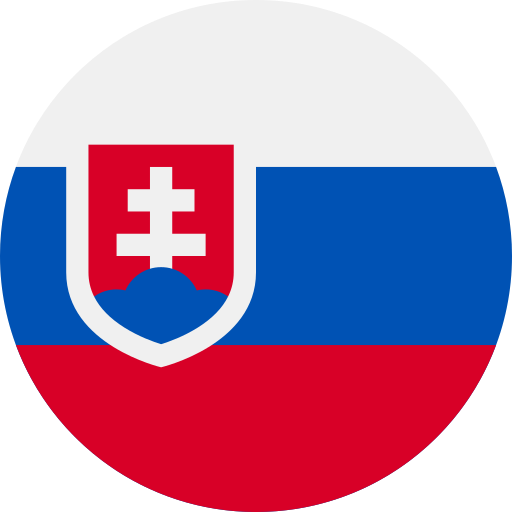Although engineering is still a male-dominated field, but assuming a young woman earned her PhD because of quotas ignores the reality. Behind that degree are years of intense research, late-night experiments in the lab, and peer-reviewed publications she has completed. In truth, her success comes from hard work: testing ideas, refining algorithms, and defending every paper, not from any special treatment.
Some hiring managers still worry about bringing in someone who seems “too smart,” fearing their authority could be questioned. But PhD holders aren’t out to take anyone’s job. They’re focused on solving problems, improving how things work, and making teams more effective, not stepping on anyone’s toes. Their goal is to put their deep research skills to use in real-world ways, not to compete with their colleagues.
One of our AI/ML Engineers, Kateryna Meleshenko, a PhD in engineering, shares her journey and what it’s really like to build a career in the field for a woman.
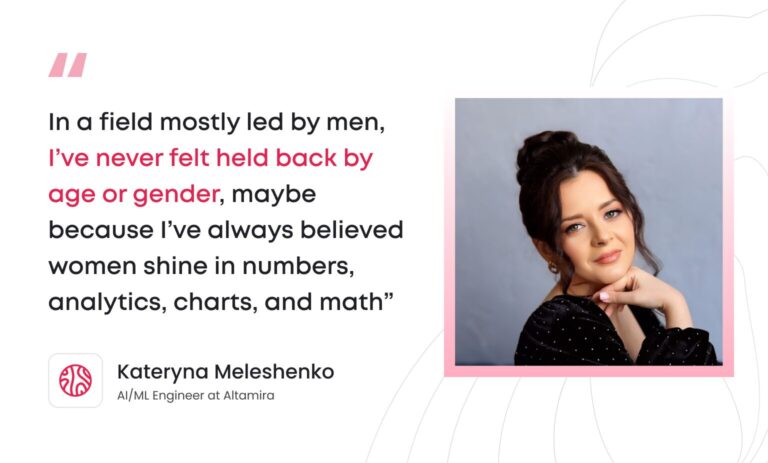
Killing the stereotypes
People are often surprised by my background—a PhD combined with experience as a Senior Economist in a shipping company. To them, a PhD sounds too theoretical, the economist role too practical, and the marine industry too tough for a woman.
Many aren’t aware that, to defend a dissertation, you must secure approvals from industry partners, advisors, and sometimes regulatory bodies – proof that your research has to address real-world problems.
In other words, earning a PhD already involves designing studies with practical applications, collecting data that businesses value, and demonstrating that your findings can be effectively implemented in actual operations. When someone holds both titles, it means they’ve bridged theory and practice: they not only develop new models or methods but also ensure those insights can drive measurable improvements in a company or market.
The shift: How an economist became an AI engineer
When I moved from a Senior Economist role to the post-fixing department at another shipping company, it didn’t take long to see the mismatch. Despite a strong technical education from a maritime university, a second degree in economics, and a PhD earned through years of hard work, I found myself stuck doing routine tasks – filling out forms, sending invoices, and handling client emails. It was work that barely scratched the surface of what I was trained for.
I couldn’t tolerate that after pouring years of effort, energy, and stress into earning two degrees and a PhD, I was stuck in a role that felt like autopilot: no creativity, no room to improve anything (because the company thought everything “already worked fine”), and no use of modern tools, let alone AI. Despite my qualifications, I had no say in decisions and no chance to drive change. Eventually, I burned out in a field I once loved. That’s when I knew it was time to move on—to a new company, a new industry, and ultimately a new profession where I could actually use my knowledge and keep growing.
Around that time, a lot of people told me I might find real fulfilment in data science, so I gave it a shot and enrolled in the IBM Data Science Certification on Coursera. From the first module, it just clicked. Machine learning brought together everything I enjoyed: machine learning combined the math and statistics I love, the analytics and chart-building I had practised, the investigative mindset of finding insights, as well as programming, hypothesis testing, experimentation, reporting, and a scientific way of thinking, all powered by modern tools and technologies.
Everything about it just made sense. I found myself fascinated by how quickly I could iterate on a model, validate hypotheses, and see tangible improvements. I realised the statistical modelling I already loved in maritime economics was the same core skill behind predictive algorithms, so the move felt natural, not radical. This felt like my Ikigai – a field that was intellectually engaging, played to my strengths, paid well, and created real value for others.
I didn’t just switch into machine learning, I brought its core principles with me and layered on the tools. From my previous roles, I carried over a sharp analytical mindset and a strong grounding in math and statistics, shaped by my PhD and two master’s degrees. I also had hands-on experience working with large datasets whether managing voyage databases and financial spreadsheets as a Senior Economist or handling client invoicing and balance records in my post-fixing role.
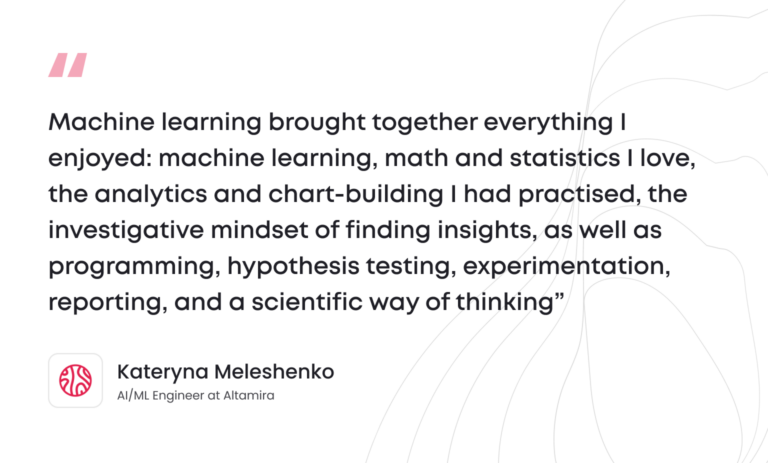
Those experiences taught me how to break down complex problems, carefully validate data, and explain technical insights in a clear, practical way. All of that gave me a strong head start when I moved into full-time machine learning, especially in areas like feature engineering, evaluating models, and turning data into actionable recommendations.
The grind: credentials, work, and crashes
My journey into data science began with a conscious effort to build the right credentials. Through programs like the IBM Data Science Specialisation, DataCamp’s courses, and the PCEP certification, I sharpened my Python proficiency to extract data from databases, wrangle and visualise it. These certifications also introduced me to core machine-learning workflows in scikit-learn, from train/test splits to model validation, and gave me a foundation in basic NLP techniques. I leaned on my engineering background in numerical modelling to master frameworks and libraries faster than most new coders.
With those credentials in hand, I set out to build a technical stack I could use on real-world projects. Python became my main tool, and I leaned on libraries like NumPy and Pandas for data manipulation, Matplotlib for visualisations, and scikit-learn, TensorFlow, or PyTorch to train models. Most days, that meant hours in Jupyter Notebooks, tweaking prototypes, testing algorithms, and finding the right balance between accuracy and interpretability. To turn insights into action, I built dashboards in Tableau and created interactive visuals with Plotly, making it easier for stakeholders to grasp the results of an A/B test or see the value behind a recommendation engine and trust the data behind their decisions.
Professional growth
As my skills grew, so did the trust people placed in me. Organisations started inviting me to mentor their teams, support individual career growth, and offer one-on-one advice. Whether helping professionals make the jump into machine learning or guiding them through real projects, I found myself sharing insights, reviewing practical use cases, and giving clear recommendations. It showed me that with clear communication and hands-on experience, even complex ideas can become understandable.
Behind the scenes, of course, there’s the very human side of long nights, family commitments, and the occasional burnout. When I was studying data science and machine learning, those late-night hours were often the calmest and most focused. With the world quiet, I could dive deep into tough concepts without distractions.
Now, my professional roles have fixed eight-hour days, which lets me reserve evenings and weekends for family and rest. Overtime only creeps in when deadlines slip, and in those rushed moments, mistakes happen—skipping unit tests, forgetting to check logs, or rushing hypotheses without double-checking the data. But each mistake turned into a lesson, helping me spot overlooked edge cases or improve my workflow to be stronger and more reliable.
Imposter syndrome has also played its part. Early on, I felt outmatched by senior engineers, convinced I wasn’t seasoned enough to speak up in a room full of experts. Luckily, my mentor stepped in with honest talks and shared deep theoretical knowledge – things that even some experienced professionals hadn’t fully grasped. Over time, I learned that practical skills come from hands-on work, but a solid understanding of theory is what makes your expertise stand strong when it’s really tested.
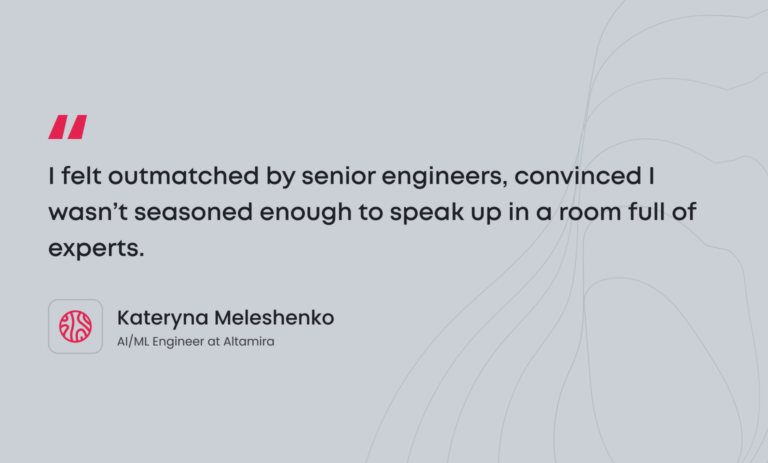
In a field mostly led by men, I’ve never felt held back by age or gender, maybe because I’ve always believed women shine in numbers, analytics, charts, and math. At my previous job, I was the only woman among six men, but instead of feeling out of place, I thrived. That experience taught me something important: when you bring strong analysis and clear communication, gender and age don’t matter. What counts is the quality of your work and your ability to work well with others.
The work: What you’re building now
Today, I spend most of my time creating data-driven solutions for a marketplace platform similar to Amazon, making complex data easier to understand and use. In my role, I analyse and group customers and sellers to uncover hidden patterns, build custom recommendation systems that increase engagement, and add AI assistants for more advanced features. Besides modelling, I also develop tools that provide clear metrics, interactive dashboards, and automated alerts, helping stakeholders make smarter business decisions in real time.
While neural networks (like LLMs) and computer-vision projects are all the rage, my passion remains rooted in classical machine learning: I still enjoy crafting decision trees, random forests, and gradient-boosting models to uncover patterns. I am happy that my current project combines all approaches and tools, so that each team member can work according to their skills and preferences.
What tech industry can learn from you
Companies often screen for the usual credentials, like a Computer Science degree or years of software engineering experience. But focusing too much on that can make them miss out on talented people who come from different, yet equally strong, technical backgrounds. I don’t have a CS degree, but my studies at a technical maritime university and my PhD in Engineering trained me to solve complex problems using advanced math and engineering skills.
When I moved from being a Senior Economist into machine learning, I realised my skills in breaking down problems with numbers, using industry knowledge, and applying strong math helped me ask new questions and spot patterns that tech experts might overlook. It also helped me adapt quickly to challenges along the way.
Empowering women in tech
People like me who switch fields often pick up new skills faster because we’ve already mastered a whole different way of thinking and set of tools. Many have told me I come across as more expressive and clearer than typical developers, which I credit to the soft skills I built in my earlier roles, skills that make teamwork much easier.
Having designed complex models for maritime operations, I could easily apply that experience to organising data and creating features. My background also gave me a deeper understanding of how business decisions connect to numbers and how numbers reflect business needs. That perspective helps me develop models faster and make sure the solutions truly solve the right problems.
Yet many AI teams today get sidetracked by chasing the latest neural-network architectures or building massive data pipelines without first grounding themselves in domain reality. They may create “perfect” deep-learning systems that nobody understands or that fail to integrate with existing workflows – models that win benchmarks but underperform in production. In contrast, leaning on classical machine-learning methods and collaborating closely with domain experts can yield more interpretable, reliable results and encourage faster iterations.
Ultimately, tech industry needs to loosen its grip on pedigree and recognise that people who switch domains can offer faster learning curves, richer context, and unique interdisciplinary approaches – qualities that often lead to more business-aligned AI products. By valuing diverse experiences as much as “classic” credentials, companies can build stronger, more adaptable teams that avoid common AI pitfalls, bridge the gap between theory and practice, and drive projects to real-world impact.
The advice for women starting their way in tech
Women have been in tech for decades and age is the only barrier left. I switched to Machine Learning at 30+ and never felt I’d “missed something.” If I had spent all my previous years focused solely on programming or analytics, I wouldn’t be as well-suited for an ML Engineer role – a position that requires a blend of programming, problem solving, statistics, reporting, and dashboard creation.
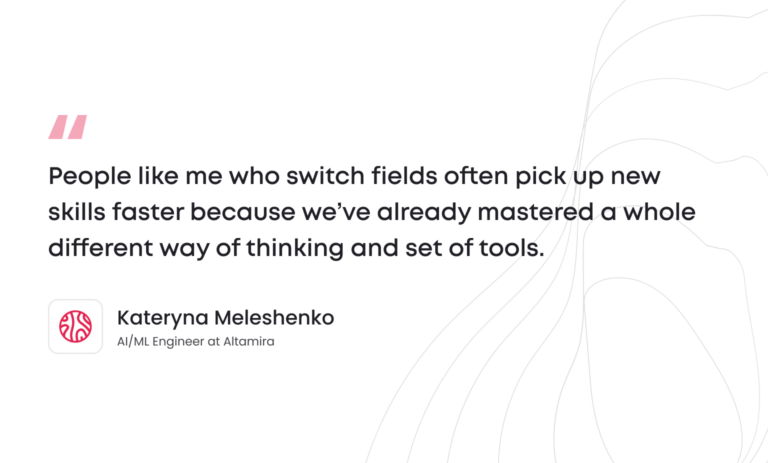
All of those skills came from my varied roles, from analysing currency markets in my school years to working on scientific projects in the engineering field. Trust that your journey so far gives you a head start – if the new field resonates with your past, go for it.
Don’t wait for permission to switch careers
Your background is your advantage — if a role resonates with your skills, dive in, even if you don’t have a “traditional” computer science degree.
Don’t apologise for non-traditional experience
Traditional computer-science credentials are optional; what matters is whether your existing skills already solve the problems the field faces.
Learn in public, build real things, chase the hard problems
Share your projects, ask for feedback, and tackle challenges that force you to grow. Visibility and tangible work demonstrate your ability far louder than credentials alone.
Based on my experience, I always like to say: “Switching fields, you start not from zero, you start from your experience.”






